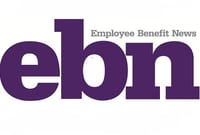 Mandatory distributions from employer-sponsored plans are a creation of regulation—specifically, a section of ERISA that allows plan sponsors to distribute accounts with less than $5,000 out of a qualified plan and into a safe harbor IRA. If plan sponsors follow the rules, they are protected from legal recourse, and the rules are simple: act in a fiduciary manner when choosing a provider for their program. However, that word—“fiduciary”—is often hard to define and can be interpreted in many ways, so it begs the question: “How does a sponsor best fulfill that responsibility in the context of a mandatory distribution program?”
Mandatory distributions from employer-sponsored plans are a creation of regulation—specifically, a section of ERISA that allows plan sponsors to distribute accounts with less than $5,000 out of a qualified plan and into a safe harbor IRA. If plan sponsors follow the rules, they are protected from legal recourse, and the rules are simple: act in a fiduciary manner when choosing a provider for their program. However, that word—“fiduciary”—is often hard to define and can be interpreted in many ways, so it begs the question: “How does a sponsor best fulfill that responsibility in the context of a mandatory distribution program?”
Fortunately, after reviewing the basic rules laid out by ERISA, we can readily identify a handful of superior, “bright line” program attributes that are clearly “fiduciary friendly.” Let’s explore each of these features to see how they provide more complete fiduciary protection for an employer-sponsored plan’s mandatory distribution program.
- Assessment of Monthly vs. Annual Fees: Based on experience[i], assessing administrative fees monthly will save 45% of safe harbor IRA accountholders an average of 51% in fees—a much more compelling option than a comparable annual fee.
The key to comprehending how monthly fees are, hands down, better than annual fees is to understand that these very small accounts (mandatory distributions average about $2,500) are “high velocity,” meaning that an estimated 46% of the accounts will be closed within 30 months after they open. So with a monthly fee assessment, those accounts that open and close quickly do not pay unnecessary fees, and the rest of the accounts are no worse off than they would be under an annual fee regimen.
- Reduction of Cash-Outs: Mandatory distributions often result in participants cashing out their small accounts rather than rolling them over to safe harbor IRAs or their present employers’ plan. In today’s digital/online service environment, cashing out is all too easy. Any of these participants could, 30 years down the line, come back to a former plan sponsor and say, “You kicked me out of your plan as part of a mandatory distribution, and you didn’t give me any guidance about cashing out.”
A sponsor’s best defense is to ensure that, before cashing out, plan participants are required to speak with a live service representative who will take the time to counsel and guide them as to the best course of action. Better yet, these interactions should be part of a fully auditable program that guarantees perpetual record retention. As reported by Boston Research Technologies, plans with this feature reduced cash-outs by more than 50%[ii].
- Performance of Lost/Missing Participant Services on a Recurring Basis: In today’s highly mobile society, Americans are reported to change residences about 12 times during their lifetime[iii]. Address changes are particularly troublesome because participants change jobs and don’t bother to update their new addresses of record. The best defense? Choose a service provider with a proven track record of regularly recording returned mail and subsequently performing successful lost/missing participant searches. Like any other program feature, measurable performance matters!
- Facilitation of Auto Portability & Active Promotion of Lifetime Participation in the Retirement System: Plans should choose a mandatory distribution program provider with an established track record of working with plan participants after their savings have been transferred to safe harbor IRAs, and moving their savings forward to their current employers’ retirement plans.
This doesn’t just apply to participants who have left—sponsors should also accept roll-ins of current employees’ small balance accounts from other plans, and actively educate participants about how rolling in their 401(k)s from inactive employer plans can improve their retirement readiness. The two-way flow of assets described here is a singular feature of auto portability, which works to the advantage of both sponsors and participants over the long term.
Account consolidation services don’t go unappreciated by participants—in a recent study authored by Boston Research Technologies CEO Warren Cormier, 46% of participants described such roll-in services as “an excellent benefit” compared to other employee benefits, and an additional 47% of responses identified roll-in services as “a good benefit.”
While no one can guarantee that participants won’t come back someday with a lawsuit in mind, what can be attested upon adopting these features is that your plan took extraordinary steps to fulfill its fiduciary responsibilities. If not, it may be time to review your mandatory distribution program.
____________________________________________________________________
[i] Retirement Clearinghouse research conducted for 91,662 safe harbor IRA accounts opened from January 1, 2013 through May 31, 2015.
[ii] Boston Research Technologies: Eliminating Friction and Leaks in America’s Defined Contribution System, April 2013
[iii] United States Census: America Community Survey (ACS), 2007
